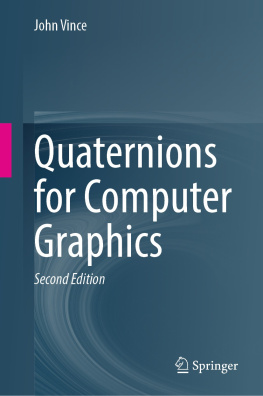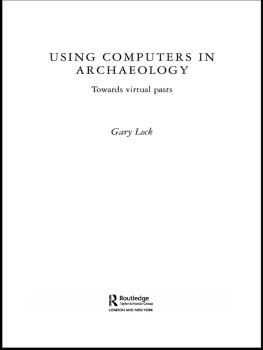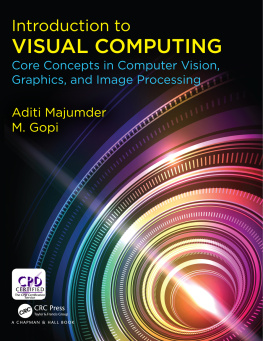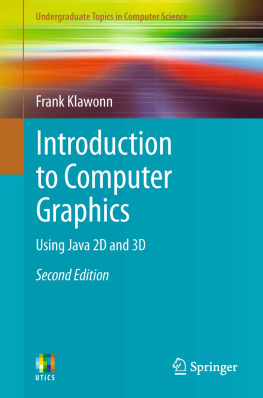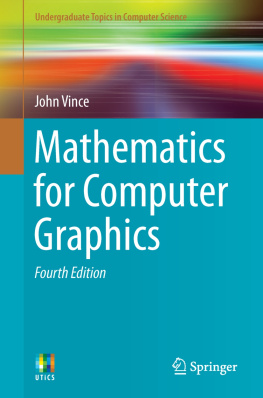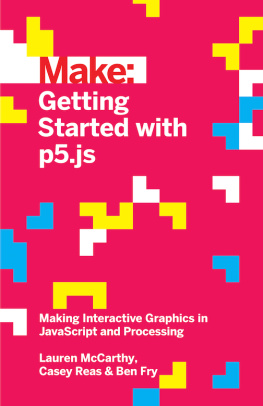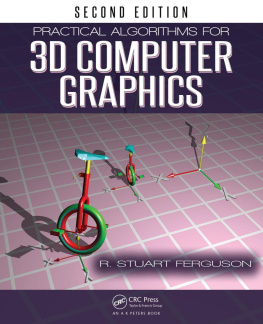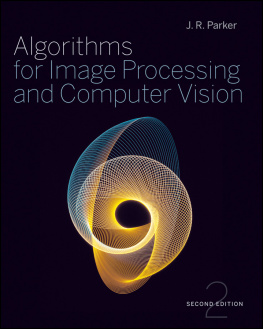Jacob Gaboury - Image Objects: An Archaeology of Computer Graphics
Here you can read online Jacob Gaboury - Image Objects: An Archaeology of Computer Graphics full text of the book (entire story) in english for free. Download pdf and epub, get meaning, cover and reviews about this ebook. year: 2021, publisher: MIT Press, genre: Romance novel. Description of the work, (preface) as well as reviews are available. Best literature library LitArk.com created for fans of good reading and offers a wide selection of genres:
Romance novel
Science fiction
Adventure
Detective
Science
History
Home and family
Prose
Art
Politics
Computer
Non-fiction
Religion
Business
Children
Humor
Choose a favorite category and find really read worthwhile books. Enjoy immersion in the world of imagination, feel the emotions of the characters or learn something new for yourself, make an fascinating discovery.

- Book:Image Objects: An Archaeology of Computer Graphics
- Author:
- Publisher:MIT Press
- Genre:
- Year:2021
- Rating:3 / 5
- Favourites:Add to favourites
- Your mark:
- 60
- 1
- 2
- 3
- 4
- 5
Image Objects: An Archaeology of Computer Graphics: summary, description and annotation
We offer to read an annotation, description, summary or preface (depends on what the author of the book "Image Objects: An Archaeology of Computer Graphics" wrote himself). If you haven't found the necessary information about the book — write in the comments, we will try to find it.
Image Objects: An Archaeology of Computer Graphics — read online for free the complete book (whole text) full work
Below is the text of the book, divided by pages. System saving the place of the last page read, allows you to conveniently read the book "Image Objects: An Archaeology of Computer Graphics" online for free, without having to search again every time where you left off. Put a bookmark, and you can go to the page where you finished reading at any time.
Font size:
Interval:
Bookmark:
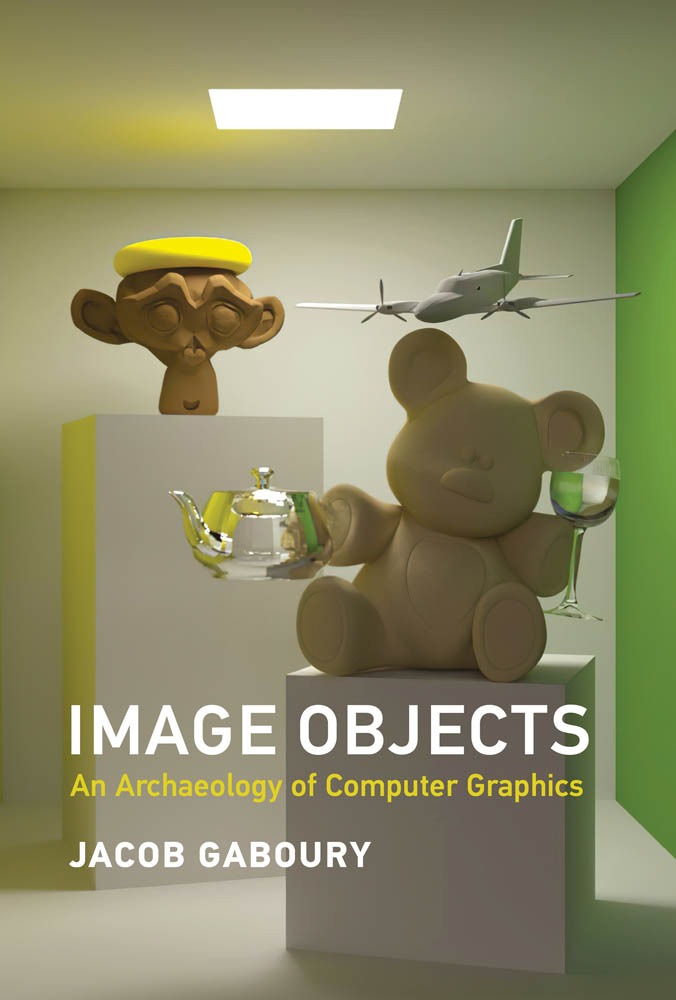
Image Objects
An Archaeology of Computer Graphics
Jacob Gaboury
The MIT Press
Cambridge, Massachusetts
London, England
2021 Massachusetts Institute of Technology
All rights reserved. No part of this book may be reproduced in any form by any electronic or mechanical means (including photocopying, recording, or information storage and retrieval) without permission in writing from the publisher.
The MIT Press would like to thank the anonymous peer reviewers who provided comments on drafts of this book. The generous work of academic experts is essential for establishing the authority and quality of our publications. We acknowledge with gratitude the contributions of these otherwise uncredited readers.
An earlier version of chapter 1 was published as Hidden Surface Problems: On the Digital Image as Material Object in the Journal of Visual Culture 14 (1), and a version of chapter 2 was previously published as The Random-Access Image: Memory and the History of the Computer Screen in Grey Room 70 (Winter 2018).
Library of Congress Cataloging-in-Publication Data
Names: Gaboury, Jacob, author.
Title: Image objects : an archaeology of computer graphics / Jacob Gaboury.
Description: Cambridge, Massachusetts : The MIT Press, [2021] | Edited version of the authors thesis (Ph.D.)--New York University, 2014, under the title: Image objects : an archaeology of 3D computer graphics,19651979. |
Includes bibliographical references and index.
Identifiers: LCCN 2020031707 | ISBN 9780262045032 (hardcover)
Subjects: LCSH: Image processing--History. | Computer graphics--History.
Classification: LCC TA1637 .G33 2021 | DDC 006.609--dc23
LC record available at https://lccn.loc.gov/2020031707
d_r0
List of Figures
.
.
This book is the product of many years, and the work and collaboration of countless people, communities, and institutions. It has benefited, first and foremost, from the patience and enthusiasm of mentors who saw this project through its earliest iterations nearly a decade ago. I would like to thank Alexander Galloway for pushing me to make big claims, Lisa Gitelman for ensuring those claims had substance, Mara Mills for her guidance and foresight, and the support and investment of Jussi Parikka and Timothy Lenoir. I am truly lucky to have had the opportunity to work with and learn from the incredible intellectual community that is the NYU Department of Media, Culture, and Communication, whose faculty and students remain my advisers, colleagues, and friends.
That this project was allowed the time and resources to mature is thanks largely to the support of key research fellowships and archives, which provided critical funding and through which I presented early chapter drafts that challenged my own disciplinary preoccupations. My first trip to the University of Utah was made possible through the ACM History Fellowship, and subsequent trips were supported by the IEEE Life Members Fellowship in Electrical History. At Utah, I benefited from the guidance of an incredible group of archivists in the J. Willard Marriott Library Special Collections, including Elizabeth Rogers, Lorraine Crouse, Krissy Giacoletto, Sara Davis, and Molly Rose Steed. Work in the Carl Machover Papers at the Charles Babbage Institute was supported by the Adelle and Erwin Tomash Fellowship in the History of Information Technology, where Jeffrey Yost and Thomas Misa helped guide me through the collections and pushed the project in new directions. Access to the National Museum of American History and the Air and Space Museum were made possible through a Lemelson Fellowship from the Smithsonian Institution, where Eric Hintz and Paul Ceruzzi offered invaluable guidance. I would also like to thank David Brock at the Computer History Museum and Henry Lowood at Stanford University for their invaluable assistance in navigating their institutional archives and collections.
The first draft of this project was completed in Lneburg, Germany, during a transformative fellowship at the Institute for Advanced Study on Media Cultures of Computer Simulation with Martin Warnke and Claus Pias. A final chapter was added during a research fellowship at the Internationales Kolleg fr Kulturtechnikforschung und Medienphilosophie in Weimar, Germany, alongside an incredible group of fellows, and with the expert guidance of Bernhard Siegert and Lorenz Engell. The proposal for this book was completed during a postdoctoral fellowship at the Max Planck Institute for the History of Science in Berlin, where Lorraine Daston, David Sepkoski, and an amazing community of historians pushed me to consider a much broader view of the history of science and the place of computer graphics within it. That proposal is likewise indebted to the care and attention of Raiford Guins and Henry Lowood, whose feedback and advice transformed what was a vague plan into a complete and legible project. An early draft of the final manuscript benefited greatly from a University of California Humanities Research Institutes manuscript workshop fellowship, and the patience and sage advice of Patrick LeMieux, Patrick McCray, Colin Milburn, Rita Raley, and Fred Turner in tweaking, nudging, and totally reworking key elements of what would become this book. Finally, I would like to thank Doug Sery, Noah Springer, my three anonymous reviewers, and the editorial team at the MIT Press for carrying this project through its final stages. Their patience and support made this work possible, and I am grateful to have had the opportunity to work with them.
I often tell graduate students that much of their professional career will be learning to confidently perform a series of tasks for which they have not been trained and might never be asked to perform againa near impossible task without the guidance of horizontal communities of practice and care, without which none of this would have been possible. To the media slackers: Stephanie Boluk, Patrick LeMieux, Laine Nooney, David Parisi, and Carlin Wing, your friendship means the world to me. To the Critical Media Forms Working Group, whose annual media aesthetics workshops refined nearly all of what follows: Brooke Belisle, Stephanie Boluk, Kris Cohen, James Hodge, Patrick Jagoda, Patrick Keilty, Patrick LeMieux, and Scott Richmond, thank you. I would also like to thank my students and colleagues at Stony Brook University and the University of California at Berkeley for the train rides, writing groups, happy hours, and phone calls that supported me and my work as I navigated the challenges and complexities of academe.
Finally: to my familyBeth, David, Bryse, Hannah, and Keith. And for Keehnan, who makes everything possible.
In order to be in a relation with the world informatically, one must erase the world, subjecting it to various forms of manipulation, preemption, modeling, and synthetic transformation. The promise is not one of revealing something as it is, but in simulating a thing so effectively that what it is becomes less and less necessary to speak about, not because it is gone for good, but because we have perfected a language for it.
Alexander Galloway, The Interface Effect
Doing with images makes symbols.
Alan Kay, Doing with Images Makes Symbols
In the fall of 1972, Marsha Sutherland spent several weeks driving around Salt Lake City in a Volkswagen Beetle half covered in a polygon mesh. The car was a spectacle, its green exterior dotted with hundreds of numbered vertices connected to form a grid of irregular squares (
Font size:
Interval:
Bookmark:
Similar books «Image Objects: An Archaeology of Computer Graphics»
Look at similar books to Image Objects: An Archaeology of Computer Graphics. We have selected literature similar in name and meaning in the hope of providing readers with more options to find new, interesting, not yet read works.
Discussion, reviews of the book Image Objects: An Archaeology of Computer Graphics and just readers' own opinions. Leave your comments, write what you think about the work, its meaning or the main characters. Specify what exactly you liked and what you didn't like, and why you think so.


